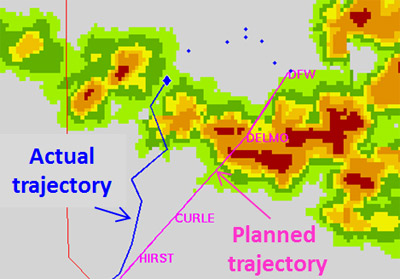As covered in previous blog, deaths caused due to lightning account for 33% of total fatalities due to natural hazard in India. This is also the highest in the world.
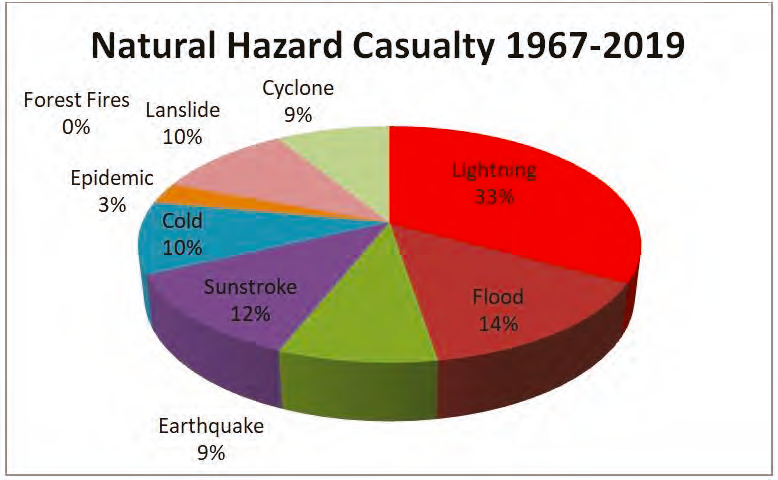
- Lightning is a global phenomenon and at given time more than 2 billion lightning strikes take place.
- Lightning is a natural electrical discharge of very high voltage and short duration between cloud and ground (CG) or with in cloud (IC).
- The science of lightning is called Fulminology.
- The fear of lightning is called as Astraphobia.
- Thunderstorms being short term phenomenon, it is extremely difficult to pre warn the population of impending lightning strike.
- To address this hazard, a Lightning Resilient India Campaign was launched by Indian Met Dept on 26 Mar 2019. With joint efforts from IMD, ISRO, MoES, NRSC, IRCS, UNICEF and State Departments awareness campaign and early warning messages have helped reduce the deaths by almost 50 % in 2021.
Lightning strikes (Inter cloud (IC) and Cloud to ground (CG)) were mapped for entire country. The figures depict total lightning strikes from 01 apr 2019 to 31 Mar 2020. The data shows that 1 out of 3 lightnings strike the ground.
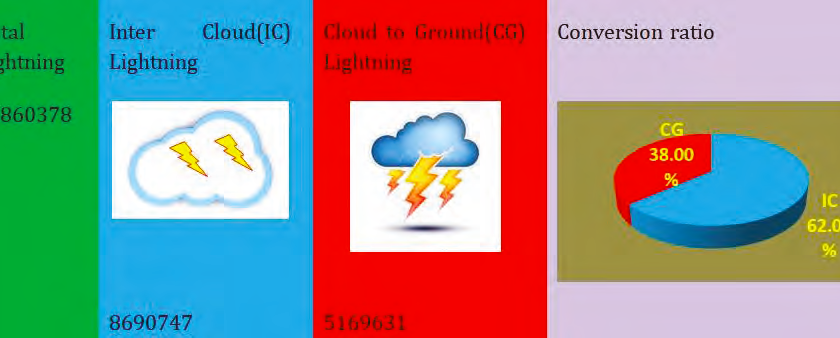
The figure below depicts the month wise lightning activity over India for year 2019-20.
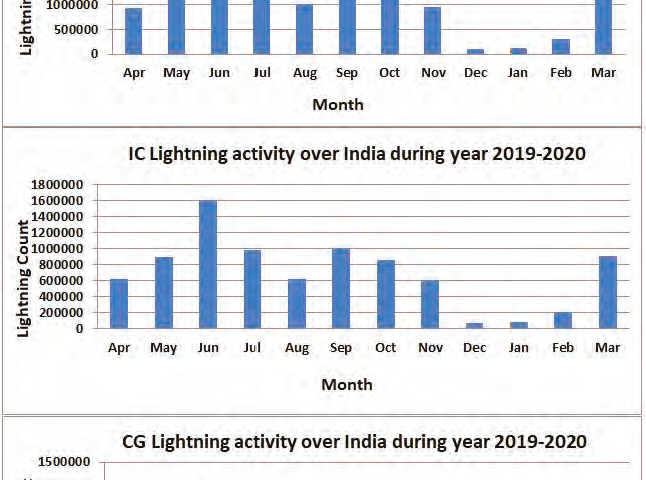
The lightning activity is observed to be maximum during months of Jun, Sept, Oct, Jul and in that order while minimum in months of Dec and Jan. Maximum lightning strikes are observed in Odisha, Madhya Pradesh, Maharashtra and West Bengal, while maximum deaths due to lightning were observed in Uttar Pradesh, Madhaya Pradesh, Bihar and Odisha. See the chart below. The reasons could be attributed to higher population density as well as more people working in open due to agriculture based activity.
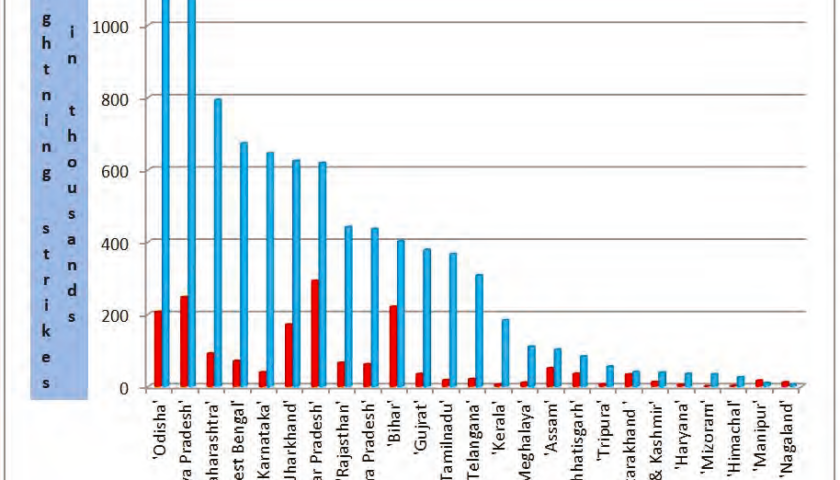
The study of data has further revealed that
- Lightning is a very localised phenomenon. With in a state it may vary due to topography, coastal region or urban and industrial area.
- Lightning has been observed mostly in second half of day. However due weather activity it may occur during any time of day.
- 60-70% of deaths occur in rural area e.g. farmers working in field, tin huts, standing under a tree.
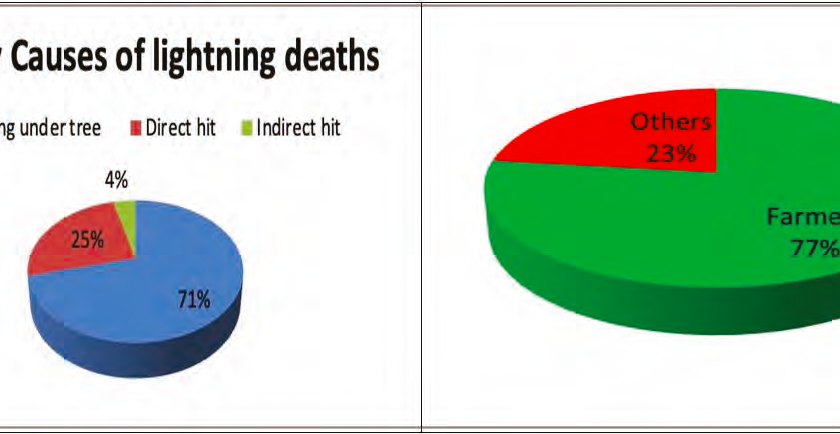
The Lightning Resilient India Campaign has been collective effort of organisations and individual. It has an ambitious goal of zero lightning deaths. The tough journey continues and it aims to utilise science for the good of humanity.
If you are required to work in open like on an airfield, request your operator to provide lightning alerts. While you can also save your life by reading about preventive steps and downloading the app developed by Government of India. Some tips are listed below for people working at airport.
If you’re outdoors
- Take cover: Go inside a sturdy building or a bus/car with the windows closed.
- Avoid objects that conduct electricity: Avoid Tin shades or poles or ladders, GPU or AC trolleys.
- Avoid open spaces: Don’t stand under trees, or using walkie talkie or mobiles.
- Avoid elevated areas: Get off ramp, ladder.
- Stop Refuelling activity.
- Do not use headsets for communicating with flight deck.
If you’re indoors
- Avoid using electrical appliances of any kind.
- Wait: Wait at least 30 minutes after the last thunder before going back outside
If someone is struck by lightning
- Call airport emergency immediately
- Give first aid, including CPR, if the victim is not breathing
- Move the victim to a safe place
- Use an automatic defibrillator if there’s one nearby
The lightning threat is for real and remember one out of three lightnings strike earth. If you are working in areas or months where and when lightning poses a threat brief your colleagues and friends about the danger. It will save life one day.
Be Safe. Fly Safe.


